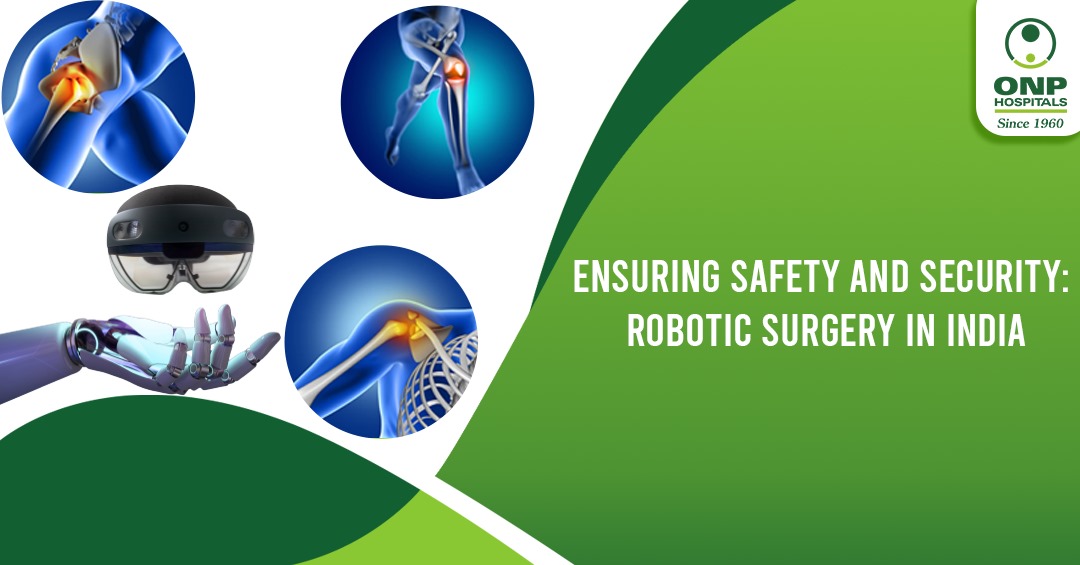As a pediatrician at ONP Hospitals, I’ve witnessed countless stories of resilience and recovery, but one case stands out—little Anaya’s story. Anaya, a spirited four-year-old, came to us after a severe finger injury that happened while she was playing in the backyard....
Introduction
The field of medicine has been witnessing remarkable advancements over the years, and one of the most notable innovations is robotic surgery. Robotic surgery, a branch of minimally invasive surgery, has gained significant traction due to its potential to enhance precision, reduce invasiveness, and accelerate patient recovery. India, with its burgeoning healthcare sector and growing technological prowess, has also embraced robotic surgery. In this blog, we will delve into the safety and security aspects of robotic surgery in India, exploring the measures in place to ensure patient well-being and the challenges that need to be addressed.
The Evolution of Robotic Surgery in India
Robotic surgery made its debut in India around the early 2000s, and since then, the adoption of robotic-assisted procedures has grown steadily. Initially, robotic surgery was mainly used in urological and gynecological procedures. However, its application has expanded to various other specialties including cardiac, orthopedic, and gastrointestinal surgeries. With advancements in technology, robotic surgical systems offer higher precision, 3D visualization, and improved dexterity for surgeons, making complex procedures more feasible.
Safety Measures in Robotic Surgery
Preoperative Assessment: Just like any surgical procedure, the patient’s suitability for robotic surgery is thoroughly evaluated before the operation. This assessment involves considering factors such as the patient’s overall health, medical history, and the complexity of the procedure.
Surgeon Training: Surgeons undergo specialized training to operate robotic systems. This training ensures that the surgeons are proficient in utilizing the robotic tools effectively, reducing the risk of errors during the procedure.
System Calibration and Maintenance: The robotic surgical system is calibrated and maintained regularly to ensure accuracy. Regular system checks and maintenance protocols are in place to prevent technical malfunctions during surgery.
Real-time Monitoring: During surgery, the robotic system provides real-time feedback to the surgeon, enabling them to adjust their movements and techniques based on the visual and tactile cues provided by the system.
Emergency Protocols: Robotic surgery centers have emergency protocols in place in case of unexpected complications. These protocols include switching to manual surgery or transitioning to a different approach if required.
Security Considerations in Robotic Surgery
Data Security: Robotic surgery involves the use of sensitive patient data and intricate surgical plans. Ensuring data security and privacy is paramount. Hospitals and clinics must have robust cybersecurity measures in place to safeguard patient information from breaches and unauthorized access.
Network Security: As robotic surgical systems are often connected to networks for updates and remote consultations, ensuring network security is crucial to prevent potential hacking or unauthorized control of the system.
Remote Assistance: While remote assistance can provide valuable insights during surgery, it also poses security risks. Ensuring secure connections and encrypted communication channels is vital to prevent any interference.
Ethical Considerations: As robotics and artificial intelligence continue to evolve, ethical considerations around robotic surgery need to be addressed. These include issues related to informed consent, responsibility for errors, and maintaining the human touch in medical care.
Challenges and Future Directions
Despite the promising advantages of robotic surgery, there are challenges that need to be tackled. These include the high cost of robotic systems, limited accessibility in remote areas, and the need for continuous training and updates for medical professionals.
Looking ahead, the future of robotic surgery in India seems promising. Continued advancements in technology, coupled with efforts to make robotic systems more affordable and accessible, will likely lead to greater integration of robotic surgery into mainstream healthcare.
Conclusion
Robotic surgery has brought a paradigm shift to the medical landscape in India, offering unprecedented precision and potential for improved patient outcomes. While the field is still evolving, stringent safety measures and security considerations are in place to ensure patient well-being and data protection. With ongoing advancements and a commitment to addressing challenges, robotic surgery is poised to play an even more significant role in reshaping the future of healthcare in India.




